Tool Repairs
Much of my re-handling work is on family heirloom tools, sometimes owned by 3 generations, or tools that craftsmen rely upon for their work, and can't easily replace. If you have a cherished tool that is showing signs of wear and tear you may want to consider having it reconditioned.
To arrange tool repairs please contact me by email.
I anticipate that tools will probably arrive with broken handles stubs still in place, customers do not need to remove old handles. Things that can cost a little bit more than standard handle replacement are welded and forged repairs to tools (i.e. tools with broken or cracked metalwork) and making or sourcing special handles.
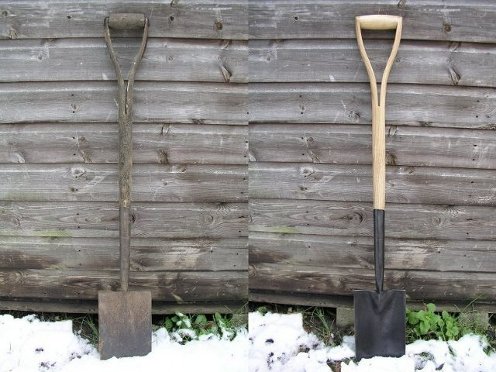
The photos above show an Elwell border spade before and after reconditioning. This tool (about 50 years old) was well worth saving. The cost was about the same as buying a new but inferior item.
My tool reconditioning activities have featured in Reclaim Magazine (downloads as pdf) - article reproduced with their kind permission.
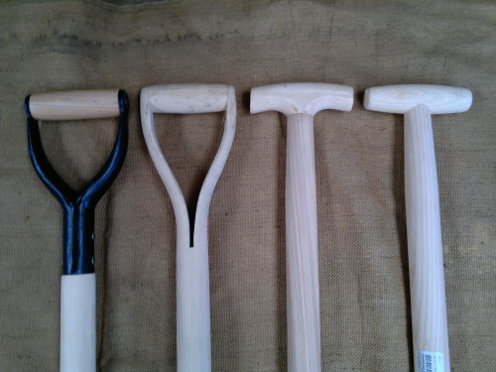
Pictured above, digging tool handle options are, from the left: metal YD, wood YD, shaped crutch T, barrel T. Wood YD type are the most popular, and have a traditional appearance to suit older tools - supply of these is becomming very problematic however. Metal YD handles are often used for contractors tools, and perhaps tolerate being left out in weather a bit better. Crutch T handles are also fairly traditional, and are commonly fitted to army surplus shovels and rabitting spades. Please note that I don't fit or repair plastic handles, I'll only replace fork and spade handles with the types shown above, and of course long straight ash handles for dung forks, pitchforks etc.

I will make soild ash "D" handles to order.
To arrange tool repairs contact me.
A few examples of customer feedback:-
"Hi Ian,Spade arrived yesterday afternoon. I can’t tell you how pleased I am with the result of your work. (And to think I almost put the Old Boy in the skip.)
If I hear of anyone in the need of a tool refurbishment specialist, I will most certainly be steering them in your direction.
Thank you so much for your time and efforts Ian.
Much Appreciated."
DB, East Riding, Yorks
"Ian my spade has arrived and is looking better than I could ever have hoped! Thank you"
M, Dumfries
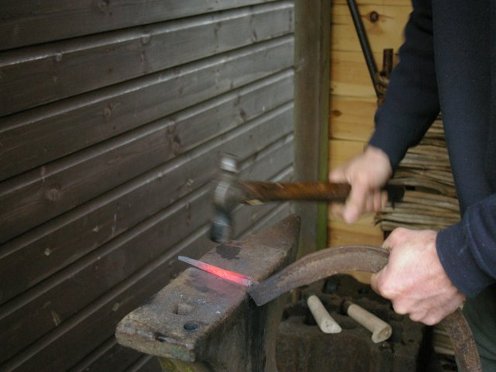
Sometimes repairs to the tang or socket of a tool may be needed. Here the tang of a grasshook is being straightened and drawn down (lengthened) at red heat.

I will always save an old handle if possible - i.e. if it is safe and worthwhile to do so. If not, I'll fit a commercially produced replacement handle that is a good match. Some old tools deserve a hand made handle, as shown above. This was made to fit a Kent pattern billhook, because no mass produced replacement was available. It takes a bit of time and experience to get this right, however the end product tends to be worth the effort.
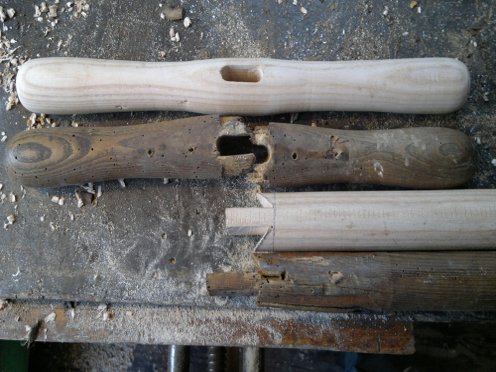
This photo shows the copying of a "T" handle for a bulb planter, with the long turned grip attached to the stem by a pegged mortice and tennon joint.

Turning a new trowel handle on a Victorian treadle lathe - I did say I was a luddite!
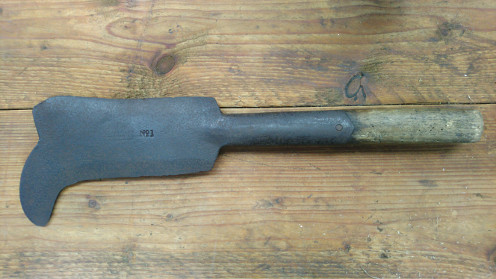
Harrison Yorkshire billhook before restoration...
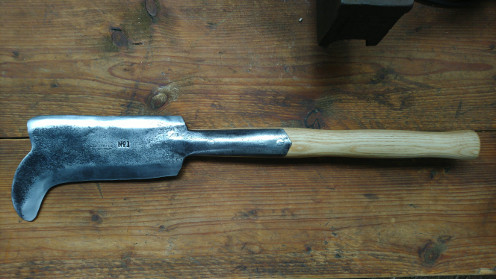
...and after, with a new handmade ash handle.
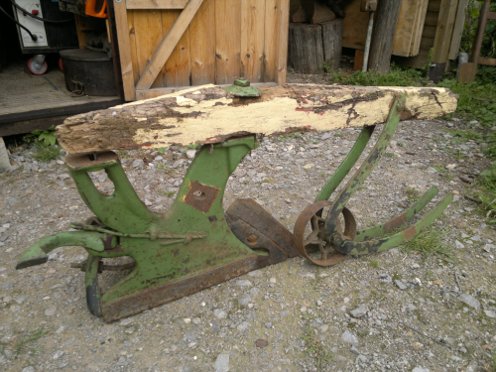
I'm willing to restore more unusual items, like this horse plough.
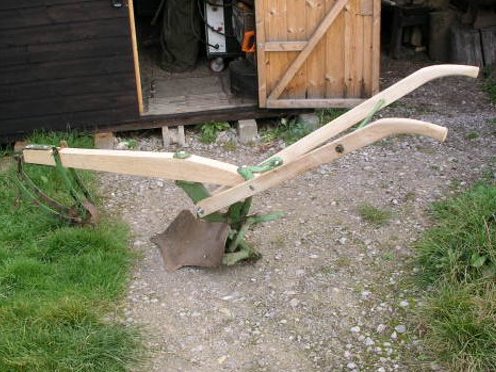
... ready for work once again.
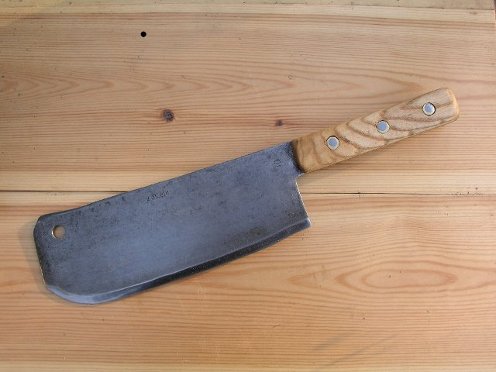
This is a cleaver that I re-handled for Mr Walton at The Outwood Butchers. No modern replacement would feel right for day in, day out use.
Another unusual restoration job recently was to recondition a set of branding irons for Kinfisher Farm shop , watercress growers, who were originally known as Coe and Sons - scrool half way sdown the above linked page to see their article on the restored brands.
To enquire about tool repairs contact me.
I've run courses on tool maintenance and sharpening for various people: Surrey & Sussex Wildlife Trusts, National Trust Nymans woodland volunteers, the Garden House in Brighton, and for the 100w artist's collective.
© Ian Swain 2023